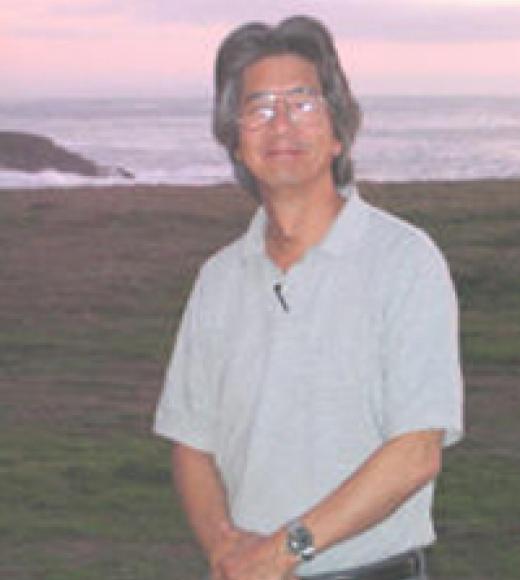
Position Title
Professor Emeritus
Education
- B.S., Zoology, University of California, Berkeley, CA, 1973.
- Ph.D., Biology, University of California, Los Angeles, CA, 1978.
Biography
Ernie Chang completed his Bachelor of Arts degree in zoology at the University of California, Berkeley, in 1973. During his undergraduate education he was influenced by the classes in marine biology that he took at the Bodega Marine Laboratory (BML). He earned his Ph.D. in biology at the University of California, Los Angeles in 1978 and studied biochemistry as a postdoctoral fellow at the University of Chicago in 1978.
He began his career at UCD in 1978 in the Departments of Animal Science and Neurobiology, Physiology and Behavior. In his laboratory located at BML he studied the physiology and biochemistry of molting and environmental stress in lobsters and crabs. He taught Physiological Adaptation of Aquatic Organisms at BML and Comparative Endocrinology on campus.
He was a member of the Animal Behavior, Animal Biology, Ecology, Endocrinology, and Physiology Graduate Groups. He served as Acting Director of BML (1999-2000). He is an elected fellow of the American Association for the Advancement of Science.
Ernie retired in 2015. He and his wife Sharon continue to live on the Northern California coast.
Research Interests
My laboratory is broadly concerned with the mechanisms of development and the physiological ecology of marine and other invertebrates, especially those mechanisms involving hormonal and pheromonal cues. More specifically, we are conducting projects on: 1) the molecular cloning of peptide hormones from the eyestalk of crustaceans (principally the lobster) that control molting and metabolism, 2) the characterization of insulin-like growth factors from crustaceans, 3) pheromones and neurotransmitters that influence reproductive and aggressive behavior in crustaceans, 4) endocrine control of female reproduction in lobsters and marine shrimp, 5) the actions of ecdysteroids (molting hormones) and methyl farnesoate in crustaceans via their hormone receptors, 6) characterization of muscle proteins in crustacean limbs during the molt cycle and development, 7) the physiological ecology of development and metamorphosis of marine invertebrates, and 8) stress responses (hormones and heat-shock proteins) in crustaceans.
We are interested in the integration of control mechanisms from the organismal (and even the community) level down to the cellular basis of gene expression. Our research combines a blend of both applied aquaculture and basic research into invertebrate behavior, physiology, and cell biology. Our laboratory keeps a broad perspective and tries not to become too narrowly focused. Our research perspectives are to remain integrative, experimental, and comparative.
Selected Publications
Covi, J. A., Chang, E. S., and Mykles, D. L. 2009. Conserved role of cyclic nucleotides in the regulation of ecdysteroidogenesis by the crustacean molting gland. Comp. Biochem. Physiol. A 152:470-477.
Zarubin, T. P., Chang, E. S., and Mykles, D. L. 2009. Expression of recombinant eyestalk crustacean hyperglycemic hormone from the tropical land crab, Gecarcinus lateralis: Effects on hemolymph glucose and Y-organ ecdysteroidogenesis. Molec. Biol. Rep. 36:1231-1237.
Lund, H. S., Wang, T., Chang, E. S., Pedersen, L. F., Taylor, E. W., Pedersen, P. B., and McKenzie, D. J. 2009. Recovery by the Norway lobster Nephrops norvegicus (L.) from the physiological stresses of trawling: influence of season and live-storage position. J. Exp. Mar. Biol. Ecol. 373:124-132.
Covi, J. A., Bader, B. D., Chang, E. S., and Mykles, D. L. 2010. Molt cycle regulation of protein synthesis in skeletal muscle of the blackback land crab, Gecarcinus lateralis, and the differential expression of a myostatin-like factor during atrophy induced by molting or unweighting. J. Exp. Biol. 213:172-183.
Basti, D., Bricknell, I., Hoyt, K., Chang, E. S., Halteman, W. and Bouchard, D. 2010. Factors affecting the post-capture survivability of the lobster Homarus americanus. Dis. Aquat. Organisms 90:153-166.
Chang, E. S. 2010. Invertebrate hormones and behavior. In: “Encyclopedia of Animal Behavior, Vol. 2” (M. D. Breed and J. Moore, eds.), pp. 209-215. Academic Press, Oxford.
MacLea, K. S., Covi, J. A., Chao, E., Kim, H.-W., Medler, S., Chang, E. S., and Mykles, D. L. 2010. Myostatin from the American lobster, Homarus americanus: cloning and effects of molting on expression in skeletal muscles. Comp. Biochem. Physiol. A 157:328-337.
Chang, E. S. 2011. The crustacean endocrine system and pleiotropic chemical messengers. In: “Chemical Communication in Crustaceans” (T. Breithaup and M. Thiel, eds.), pp. 413-430. Springer, New York, NY.
McDonald, A. A., Chang, E. S., and Mykles, D. L. 2011. Molt induction by eyestalk ablation increases expression of nitric oxide synthase in the molting glands (Y-organs) of intermolt green crab, Carcinus maenas, and blackback land crab, Gecarcinus lateralis. Comp. Biochem. Physiol. A. 158:150-162.
